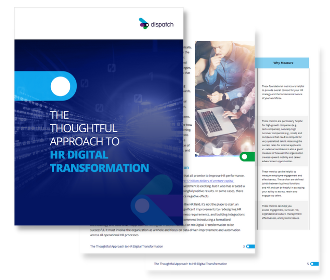Client
One of Canada’s largest multi-brand retailers
Challenge
Our client was in the middle of a multi-year project to migrate their payroll and benefits from a mainframe system to Workday. Morneau Shepell is a major benefits administrator for this organization, and our client had built a simple integration between Morneau and Workday for the first wave of migrated employees. The integration design was proving to be problematic and was insufficient to support the next population of employees that were being migrated to Workday. The issues with the integration would only be amplified with a larger and more complex population. Our client asked us to review this integration and renovate or replace it with a more robust solution.
Solution
Integrations with insurance and benefits service providers are often some of the most challenging to design and implement with Workday. Benefits enrollment, management and transactional data orchestration between HRIS’s and carriers are inherently complex, especially in large organizations that have employee populations with different benefits programs and entitlements. Integrations with benefits and insurance providers often face technical challenges as well because of the different approaches to data security, population management, quality assurance and integration automation. Quite frequently, we see integrations that still require a substantial amount of manual intervention and file manipulation on both the client and carrier sides every time the integration runs. That is what was happening in this case, which added substantial cost, introduced human error, and reduced integration reliability.
After reviewing the existing integration and the business requirements to accommodate the next wave of employees, we ended up keeping some parts of the original integration but rewrote most of it in Workday Studio. Our goal was to build an integration that could truly be hands-off and simple to manage, especially as the number of employees and the complexity of the benefits programs grew. Errors with benefits integrations can be extremely costly and can significantly undermine employee experience, so the integration had to be bulletproof and able to accommodate the numerous edge-cases within the population.
Regression testing was a significant part of the project. We needed to compare the output from the original integration with the replacement integration to ensure the new approach fixed existing problems and didn’t introduce new ones. With large and complex integrations, data quality testing can take a significant amount of time and it can be a tedious activity. We have an internally developed application called Compare which automates comparisons of extremely large datasets, and this helped us shave days off of the testing phase of the project. Based on the keen interest from business analysts and integration specialists at companies we have spoken to, we will soon be releasing a version of Compare as a timesaving tool available to anyone who needs to validate large datasets.
Outcomes
While the original solution consisted of six integration subsystems that needed to be launched every time the integration was triggered, the replacement has only one integration to launch. This greatly simplifies the process for the analyst operating the integration. The new solution also eliminated several issues that had caused hours of manual work by the analyst after each run to verify and fix output files. The new integration is far more robust and can handle the additional requirements of the new employee population as well as future business requirements. Confidence in data quality and reliability has grown substantially since the integration has launched, and the integration can be enhanced and adjusted as business needs change.

